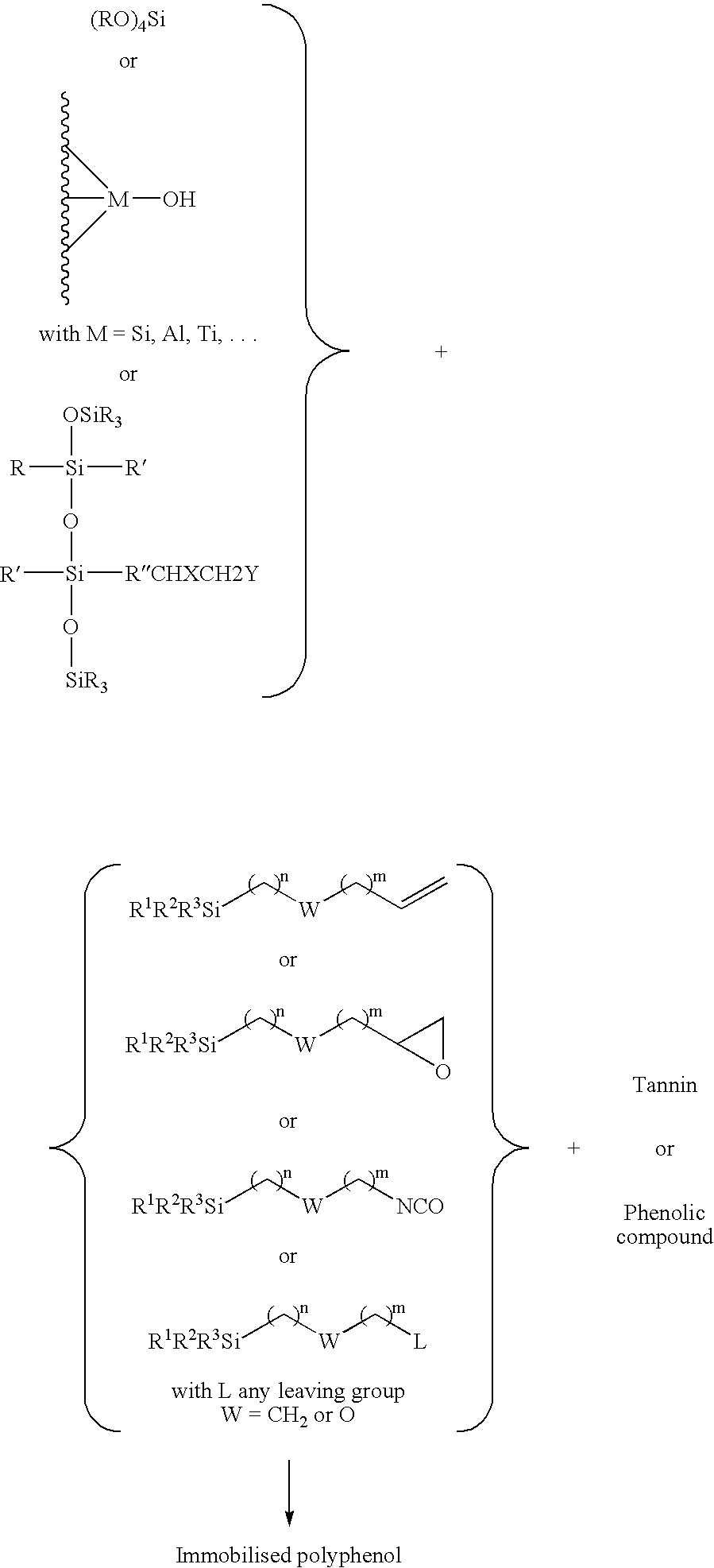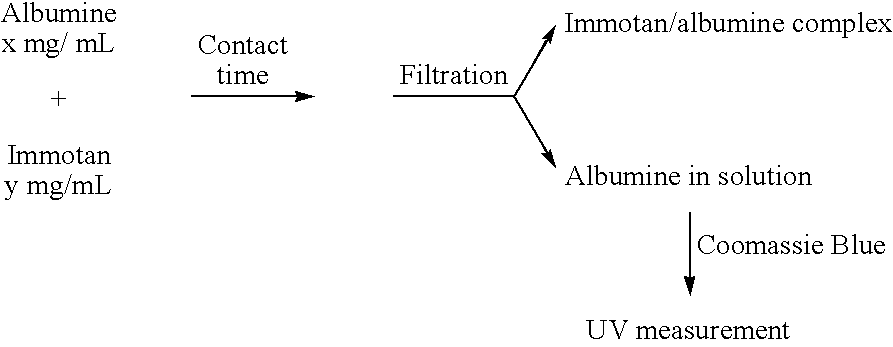Complexating systems, intermediates for their production and method for obtaining and using the same
a complexation system and tannin technology, applied in the field of immobilised tannin system, can solve the problems of low porosity of the resin thus obtained, uneconomical interest in the market, and lack of porosity of the polymer, so as to enhance the colour fastness or anti-staining properties of the textile, improve the crust formation, and avoid infections.
- Summary
- Abstract
- Description
- Claims
- Application Information
AI Technical Summary
Benefits of technology
Problems solved by technology
Method used
Image
Examples
example 2
Preparation of Silica-SP**
[0132] A reactor is charged with 50.00 g. of silica Sipernat.RTM. 50 and with 350 mL water. The pH of the resulting suspension is increased to 9.15 by the addition of 10 mL NaHCO.sub.3 saturated and 29 mL Na.sub.2C.sub.0-3 saturated. The suspension is warmed to 26.degree. C. and 30.00 mL glycidoxy-propyltrimethoxysilane is added. The pH is further increased by the addition of 8.0 mL saturated Na.sub.2CO.sub.3 solution. The suspension is reacted for 3 hours at 26.degree. C., filtered, washed with 250 mL of water and 250 mL of MeOH and dried in a vacuum dryer at 60.degree. C. over night.
example 3
Preparation of Silica-SP** on a Rotavapor
[0133] In a rotavapor flask, 100 g. of silica Sipernat.RTM. 50 is combined with 40 mL saturated Na.sub.2CO.sub.3 solution and 160 mL water. The resulting powder is mixed in a flask, and 7.0 mL Dynasylan Glymo is added while the powder is mixed on a rotavapor. The reaction mixture is additionally rotated for 2 hours at room temperature. After this period, vacuum is applied and the temperature is raised to 60.degree. C. to dry the product.
example 4
Immobilisation of Tannin
[0134] 14 g Brewtan.RTM. is dissolved in 250 ml demineralised water, and treated with NaOH 1 M to a pH of 9.5. Subsequently, 40 g of Daraclar.RTM. 7500 based silica-spacer is then added, and the suspension is heated to 60.degree. C. for 3 hours. After cooling, the product is collected on a pressure filter and washed with 10 times 100 ml demi water and dried. This yields 39.7 g of slightly brown product. Brewtan is a Chinese gallotannin with between 12 and 30 hydroxyl groups.
PUM
| Property | Measurement | Unit |
|---|---|---|
| temperatures | aaaaa | aaaaa |
| particle size | aaaaa | aaaaa |
| particle size | aaaaa | aaaaa |
Abstract
Description
Claims
Application Information
 Login to View More
Login to View More - R&D
- Intellectual Property
- Life Sciences
- Materials
- Tech Scout
- Unparalleled Data Quality
- Higher Quality Content
- 60% Fewer Hallucinations
Browse by: Latest US Patents, China's latest patents, Technical Efficacy Thesaurus, Application Domain, Technology Topic, Popular Technical Reports.
© 2025 PatSnap. All rights reserved.Legal|Privacy policy|Modern Slavery Act Transparency Statement|Sitemap|About US| Contact US: help@patsnap.com



